JOIN THE
NEWSLETTER
GET NEW POSTS SENT STRAIGHT TO YOUR INBOX
YOU JUST RELAX AND SIT THERE!
+
GET A BUTT LOAD OF TEXTURES I USE IN
MY OWN WORK FOR FREE WHEN YOU SUBSCRIBE.
It's free. No spam. Unsubscribe anytime you like.

I received an email a while back from another artist who was just starting out. He had a great portfolio of work but was unsure about how to launch off into the illustration world. Looking back almost 10 years now when I started out as a professional illustrator, I was a little naive and wasted a lot of time, money and emotion working things out.
First off, to be a freelance illustrator you do not need a qualification. In over 10 years of being hired to create artwork for clients not once have I been asked if I have a degree or if I’m qualified, nor did I state I had one. These points will help you avoid some of the pillow punching I went through, and ultimately streamline your journey toward making a career as an artist.
you do not need a qualification
The following is my personal take on what I consider the bare essentials required to becoming an illustrator. There are many other little clumps of clay to slap on top but I think everything else builds on the foundation of these seven.
Jump-to links:

First and foremost you need to show people what you do. Your website should be simple – first impressions are everything, and people have a short attention span these days. Lay it out so your portfolio is the first thing visitors see when they land on your site, and organise the portfolio to show off your best/most popular work first.
Avoid having submenus or dropdown menus for your work – new visitors just want to see what you do. With submenus you’re already making them think, and like I said people these day will often get impatient as they don’t want to have to make extra decisions. It’s like going to a sandwich shop when you’re super hungry, and the person behind the counter asks you what you want at every stage: “Would you like cheese? Would you like jalapeños? Salad? Sauce?…” You get frustrated and say, “JUST GIVE ME THE BLOODY SANDWICH!”
Take the decision out of it – just grab their attention first and if they like what you do they’ll check out the other stuff. Your site represents you, so I suggest having something that visually looks stylish.
Here are a quick couple of really good examples of straight-to-the-point yet slickly designed portfolios: Olly Moss and Alexander Wells
If you don’t have time right now to sort a good looking website then Behance is a great temporary alternative. It’s simple and stylish, it’s used by creative professionals and hiring clients to scout artists and it’s free. Also, it’s a great platform for sharing your work, learning what others like, and finding inspiration. It’s a good place to start if you haven’t got a website going or just don’t have time at the moment.
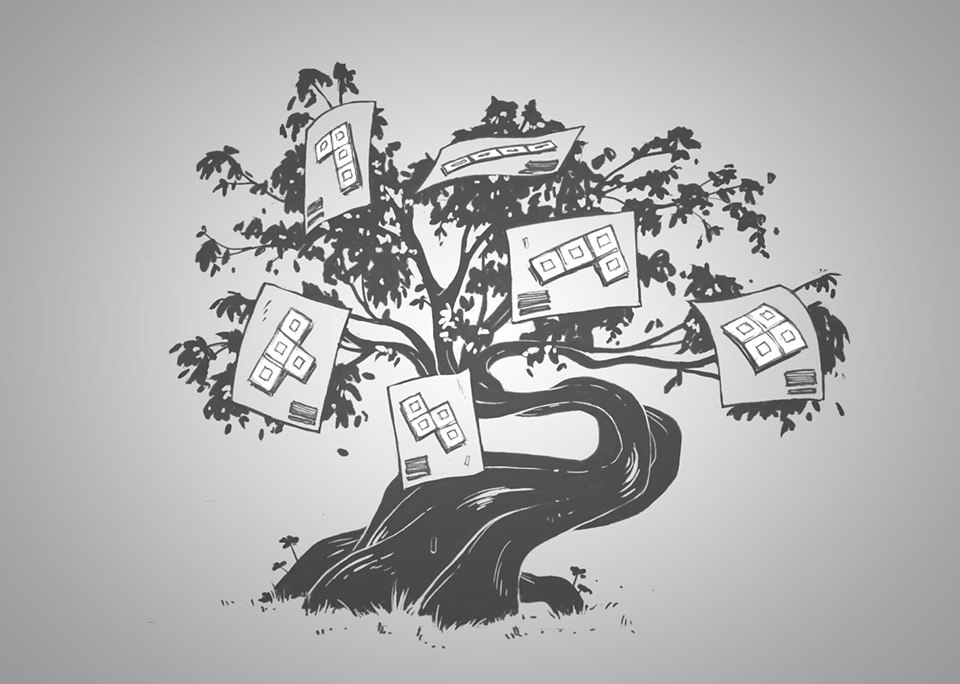
I have a quote above my desk that reads “GREAT PORTFOLIOS GENERATE GREAT WORK.” I think I got it from this book Illustration 101 by Max Scratchmann. It’s a bit outdated now but there is still some good advice in there.
Know what type of illustrator you want to be and what kind of work you’d dream of creating day-to-day. Gear your portfolio to attracting that audience/clientèle. Keep your work consistent in overall “look” and present your best work first. It’s better to have ten captivating images than 20-30 that are “meh”.
Want to know what clients look for when hiring and illustrator? Check out this article:
It’s tempting to include work that you really like but that’s in a completely different style to most of your other work. If you really like working in more than one style I’d suggest creating an alias for your other “style”, with a separate portfolio, website and marketing strategy. This isn’t uncommon.
Do not cater to the masses. I remind myself to create art in a style that I love, with subject matter that inspires me, if I love it then I’m sure there is at least one other person out there that will like it. You don’t want to look back at the end of your days, and realise you did it all for the approval of other people.
Your portfolio should be based around “your thing”; you might just want to create artwork to sell (posters, merchandise etc.), or want to get into creating comic art, or you might want to focus on getting particular kinds of commissioned jobs etc. Decide on what kind of work you want to be creating day-to-day and stick to it.
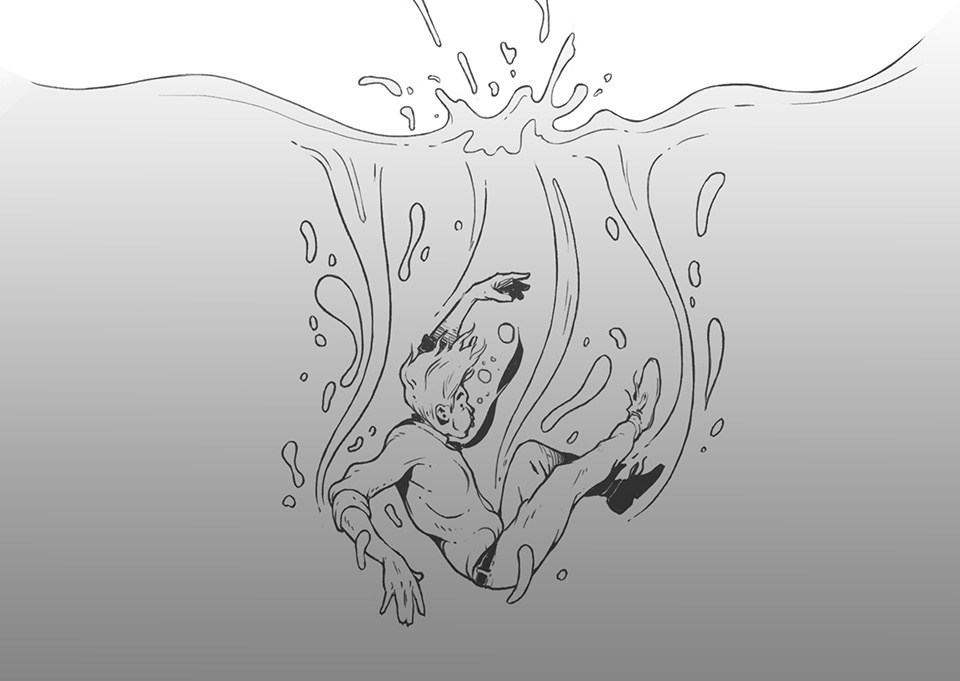
It’s a romantic notion to think of working every day from home, creating artwork all day long and getting paid for it. While this is by all means a possible way of life as an illustrator, there are a couple of reasons I say it’s be best to keep a regular job on the side, especially at the start.
Listen, you’d be crazy to jump ship and battle the seas on your own without getting together at least a boat and paddle. It doesn’t make sense to drop your main means of income before you at least have a portfolio together, or a couple of completed jobs under your belt or a customer base for the products you sell.
And even if you did have all that together there are two main reasons I’d say you should keep a side job:
Having a separate income takes the pressure off trying to pay rent and buy food with an income solely from illustration gigs (which can be few and far between). Stress kills creativity.
For years I was working full time as an illustrator at home, and I thought the idea of taking on a side job would somehow mean I wouldn’t have time to take on illustration commissions if they came in. Here’s the reality; at one point I was able to work a full time job (9 – 5, Mon – Fri) and work on two separate commissions, all at the same time. This spanned a couple of weeks and meant I had zero free time, but I made it work, and delivered the work successfully on time.
So if I was able to do it with a full time job, there’s no reason I couldn’t do this with a part time job. Obviously if you are working 60+ hour weeks in your current job, then you will have to scale back your hours or find a new day job to have enough time and energy to pursue commissions or develop your illustration.
Working from home as your own boss is great and everything but the one thing it lacked for me was human interaction. Being a freelance illustrator can get lonely. Getting out of your “home-working bubble” is good for you – not only psychologically but also creatively – but I won’t go into that now. I would suggest finding something completely different to what you do at home. For example, a more physical job, on your feet, where you have a lot of interpersonal interactions with others. This can also help out a lot with the following point…
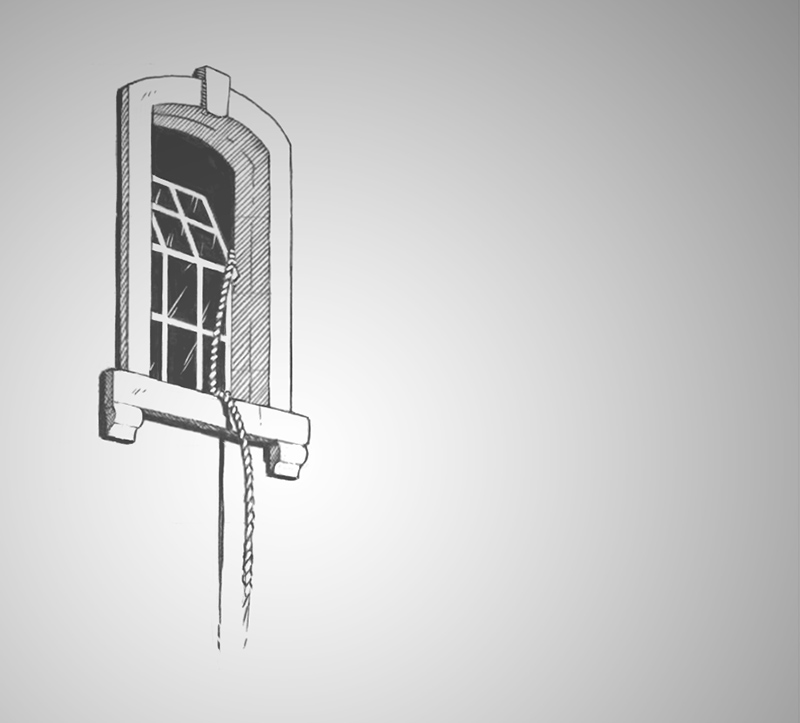
It took me a while to get things going as a professional illustrator but I can say one of the biggest factors was meeting people, and surrounding myself with other creative people. Don’t picture this wrongly. I’m not some outgoing socialite that’s chatting to people all the time – closer to the opposite in fact – but there have been a few opportunities that have come my way just by being amongst other people. Sort of “in the right place at the right time” kinda thing.
One of my first clients was someone that I met through my housemate at the time who ran a big design company. One day he asked me if I could produce something for him; off the back of that successful job more jobs came.
Another example is of a guy from my uni course who I bumped into years later, and by this point I had heard he had landed a job creating illustrations for a well known international TV series (which they ended up hiring him for on every new season from then on). Asking him how he got the gig, he said he had been working in the office of the production company of the show, just doing general office work. He happened to hear they were looking for an illustrator for this new reality TV series and pretty much said, “well actually, I do artwork…”, they liked his stuff, and the rest was history.
If you live in the middle of nowhere it could be difficult and I’d honestly say try moving to somewhere more happening or with at least an openness to creativity, though sometimes your situation might not allow that.
Some other things you can do:
Great for being “in the same boat” as other creative people, which helps with inspiration, motivation, referrals to potential clients and solidarity. [This is the main benefit of doing a university course, not necessarily learning your trade but simply being amongst others that do what you do.]
I used to do a regular “Drink n Draw” social in my city – it’s fun, sociable, improves your creativity, and you get to see how other creative minds think. My friend couldn’t find one where we lived so he decided to start one himself and yes, sometimes there was only two of us.
For inspiration, seeing how others do it, new ideas… make sure to chat to the exhibition host about the artist.
I’m terrible at describing my work to people. Nowadays I say “It’ll be easier if I show you…” Have images on your phone to show people mid-conversation what you do. Get the Behance app if you have a Behance portfolio.
Most illustrators are hidden away, immersing themselves in their artwork – that’s just part of the life. For your sanity if nothing else, you need to get out of the bubble every once in a while.
HEAR THIS: You are the make up of the people you spend most of your time with. If your goal is to create great artwork, or work in the creative industry you should have at least a couple of people in your circle that are in this sort of industry. Hang out with other illustrators, graphic designers, animators, model-makers and painters. Or if you want to be self-employed find others that are also and learn from each other. By spending the majority of your time with similar minds, you’ll feel inspired, driven, and supported when you’re demotivated.
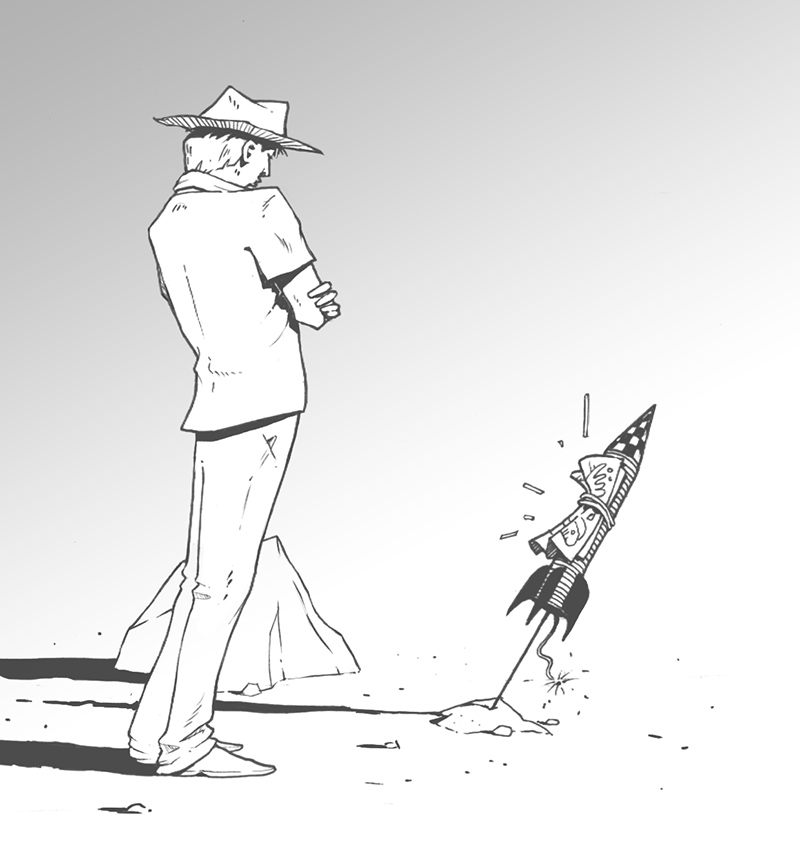
For years I was approaching this all wrong and it was honestly the cause of quite a bit of anxiety and distraction… “Which social media do I focus on? There’s so many now, but if I’m not active on all of them I might miss the gravy train!” “Am I putting in enough time?” “I need to ENGAGE!”
Your means of promotion for your business or “brand” will be based on the kind of work you create. But I’m not going to tell you where you should be promoting yourself or to whom, as that’s a whole article in itself, but I will say the most important thing when it comes to selling is defining and finding your fans.
Kevin Kelly’s 1000 True Fans is a short but very eye-opening article on how you can have your fans support you through the things you create. If you don’t like reading (shame on you!), here is an interview with him – you can skip to 2:45 for the explanation.
Also a while ago I came across Chris Wilson’s stuff, an illustrator himself who also started sharing his strategy on how to find your audience, engage with them and ultimately be paid for doing what you love. It’s probably because of him you’re reading this article right now.
I subscribed to his weekly newsletter and each week he imparted golden advice on how to promote your artwork by being more intelligent with your approach. He made so much sense that I later decided to buy his online course on selling your art, and it’s honestly one of the best things I could have done.
If nothing else I’d definitely advise signing up to his newsletter via his website as he gives a lot of good advice and is always happy to answer questions.
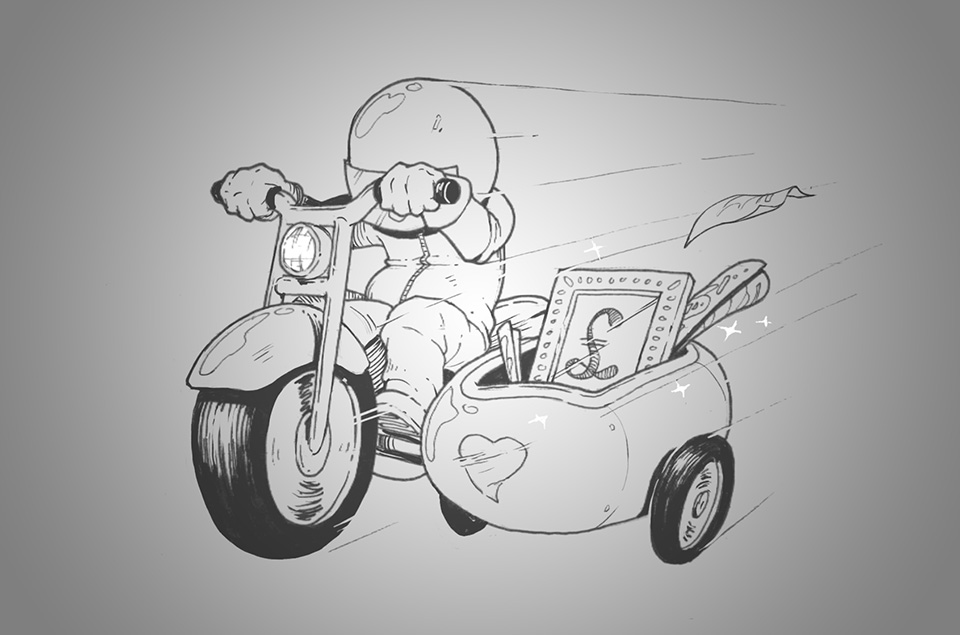
Another quote which I always remind myself of is “create while you wait” from this highly recommended book Mastering Creative Anxiety by Eric Maisel.
I apply this in two different ways. The minor one being, if I’m working on a piece and it’s not looking the way I want, instead of getting frustrated, which would lead me to procrastinate, I will move my attention to another creative thing – e.g. finishing another drawing I started, working on another piece or idea, or another task for that day. So at least you’re doing something productive with your procrastination.
The other and more major way I apply this is to focus on personal projects and ideas in between commissions. Chris Oatley, another great artist & teacher, did a great series of blog posts on Creative Side Projects.
There are two main reasons why I think they are necessary. One is they are a great way to develop your portfolio. And two, they are necessary for the “Long game”. Meaning, you can’t realistically rely on commissions as an illustrator, or at least not forever. They are very rarely regular (e.g. every week). And the ability to make a viable income lies in the hands of the person/company hiring you. Who’s to say they won’t find another illustrator to do what you do for them. So, that’s why I think it’s important to create something that generates a passive income for you: prints for sale, a picturebook, merchandise, a comic, artwork for a product or game where you can take royalties instead of a fixed fee.
This is taking matters into your own hands and not being at the mercy of people paying you to work for them. Like I said this can be done while you’re waiting for your next commission to start. You have the luxury of living in a time in which you can harness the power of the web, with things like crowd-funding helping to realise your creative visions, big and small.
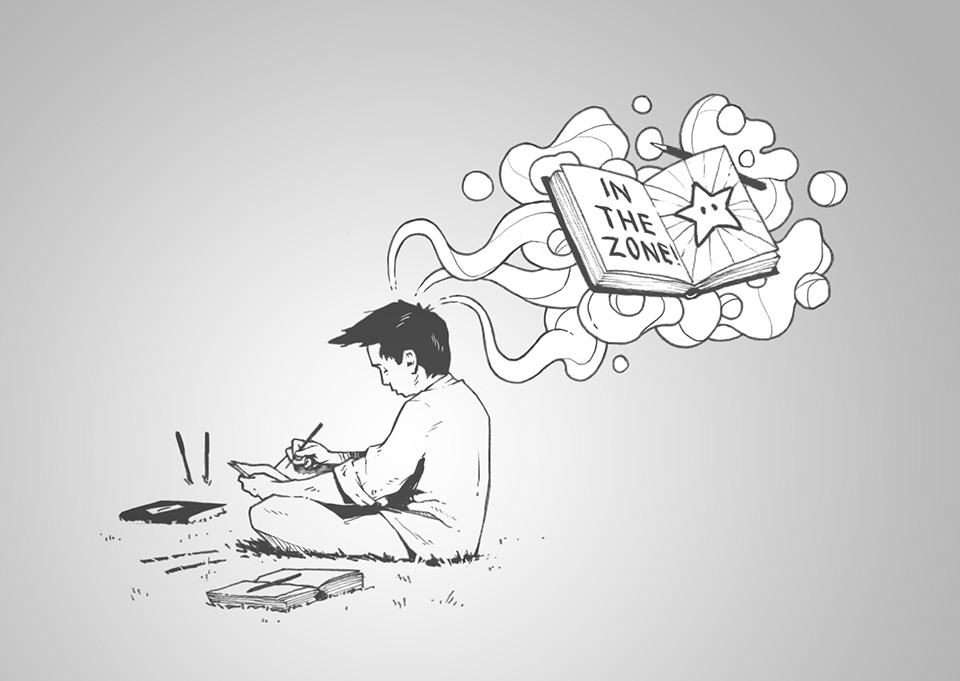
If you’re a creator of any kind I honestly think you should be regularly doodling and expressing your imagination on a page, computer, tablet or toilet cubicle wall. Your ability to draw well is irrelevant here, as the act of drawing is about finding out a little about yourself, in a similar way writing does. If you take the need to be perfect out of the equation look at this as a means of relaxation, or meditation if that’s your jam.
Explore the things you like, the way your mind works, new weird ideas, essentially your uniqueness, your quirkiness. Forget about showing this stuff to anybody – sure if it’s good, and you want to, share it, but this is for you first and foremost.
Keep a pen/pencil and paper nearby you, or on your person at all times; this stops you from “thinking about” doing it and the tools are just there, at hand ready to go. Don’t think, just start. Sometimes you come up with crap; other times gold.
And it doesn’t have to be an hour session, it can be five minutes. Find little pockets of time which you usually occupy with unproductive nonsense on your phone. Here’s an idea instead of getting your phone out when you’re waiting for your bus, train, whatever, replace that phone with a mini sketch pad and take a look around. You’ll notice things you hadn’t before and become more observant.
You’re a creative; this is where you can train your creative muscle to be STRONG LIKE BULL, and ulitmately a better illustrator.
On that point, my friend shared this with me recently and I thought it was brilliant, inspiring and hilarious: Peter Draws: drawing your feelings (a calm guide) If you have time watch the whole thing, it doesn’t disappoint.
I keep a folder on my computer that’s full of inspirational artwork. We all suffer from creative dips and lack of motivation. Keeping a folder full of beautiful artwork or bookmarking websites of my favourite artists usually gives me an injection of drive.
As well as a folder for inspiration, I keep a folder full of source photos I’ve captured over the years. These are divided into Subfolders of: Nature & Close-ups, Outdoor & Landscapes, People & Poses, Structural.
They are mostly taken when I’ve been out and about and I’ve seen something which looks worth capturing on camera. It might be something with good lighting, a unique looking tree, interesting architecture etc.
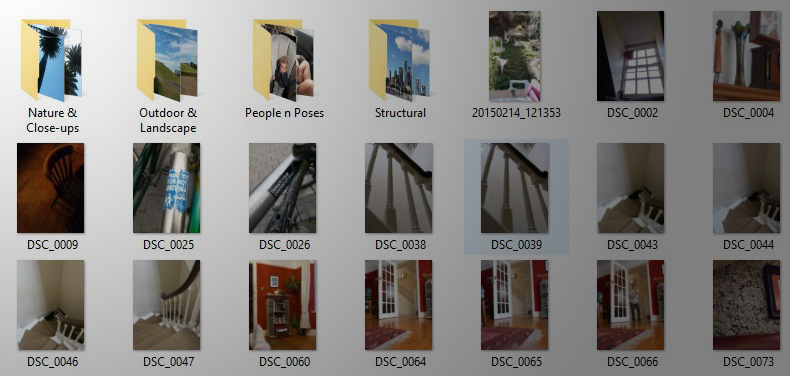
The main reason for having this folder is for quick access to images when someone hires you and you have a short deadline. We don’t always have time to go out of the house to get reference photos and can’t always rely on Google for these things. So start collecting your own.
So there it is! Well I hope if you’re starting out on your journey to becoming an illustrator you got some value from this. Did it open your EYES? Fire over any comments or questions you may have below! I would love for you to share this post if you know it might be of value to anyone else.
—
16 Comments
Delphine
11th October, 2018Inspirational, Ains, great to re-read this. Thanks!
Ains
13th October, 2018Thanks Delph! I’m glad it helps! Just went on your site. Your botanical ills are uhmazing!
LizzyDS
27th August, 2015Thank you for the pointers and inspiration. Every day is a learning curve.
Ains
29th August, 2015Hey Lizzy, no problemo! Every day IS a learning curve, although I probably forget to review what I can learn from each day!
Thomas Marsh
26th August, 2015Great piece Ains!
So much is familiar to my situation and I like the bits about collecting reference photos. I came across a good post by Maxine Lee on LinkedIn regarding the organization of one’s portfolio to emphasize how each piece plays off of the next in sequence ~ for better impact both in the subject matter chosen and the approach to the visual.
Ains
29th August, 2015Hey Thomas, glad you liked the article. Do you have the link to Maxine’s post by any chance? That sounds really interesting.
Thanks
Elliot Johnson
25th August, 2015I’ve been an artist in this business for over thirty years with many ups &downs i live with depression and i have a very hard life i used to walk 20 blocks a day just to go to my library to create my drawings my work give my mind time to forget about all the pain of my life i used to belong to a program for people we my afffliction but i left that behind I’ve been homless now for 4 yrs a Somtimes go to my sister’s for food but she has her own life and i don’t want to de a berdon i leave my artwork with her and walk around a lot i thinking of moving to another city and take my chances somewhere else sleeping on the street and subways is tiring i haven’t slept in days now but I’m going to the library every day except on Sunday.my illustrations are my life and i know if i had better way of comunicating i could maybe sell something but I’m not to trusting of people and i wacth my back its not safe out here people are mudered for nothing guns are everywhere shooting anyone the concrete looks like ketchup winters comin and i don’t want to be around here good luck nice readin your In last night
Ains
29th August, 2015Hey Elliot, it definitely sounds like you need to get into the right environment, where you have a bit more stability and where people appreciate creativity.
Have a look online and see if there’s any creative group or programs that help people on the street nurture their creativity. Like I said in the post, you really want to try and be in an environment where you can be creative and you are surrounded by creativity.
You’re walking 20 blocks to the library just to create so that shows you have determination and I really respect you for that. It honestly makes me feel slightly shameful of my laziness to do work on certain days and make excuses to myself.
I’ve seen artist selling their art on the streets, from just little sketches & paintings to massive chalk murals drawn on the ground. So even people who are struggling can find a way to get things off the ground. But if people around you are constantly worried about what’s around the corner then they’re probably not going to stop and admire what you do on the street.
I can’t speak pretending to know your situation but just from my perspective what would I’d be focusing on is finding a way to get a way from the distractions of your surroundings and look for somewhere you can more easily focus on doing what you love and where people support what you do.
Hope that helps and all the best man!
Carol Peck
25th August, 2015I am currently studying at CATC online for my Diploma in Graphic Design and have decided to specialise in the area of Illustration. I am glad I had a chance to see this blog its given me inspiration to keep going .. I find it great to see what others can do and learn from others at the same time thanks again..
Ains
29th August, 2015Thanks a lot Carol!
I want to keep seeing people doing what they love so I’m really glad it sparked some inspiration.
Keep going!
Sonjoy Das
22nd August, 2015Superb Post. Very Inspiring. I myself have experienced a lot of things you have mentioned here and also thought of doing many such similar things. I am sure, many of us must have had some or the other experiences you have shared. But you have shown a very positive way.
Thanks Ainsley for sharing such an inspiring article 🙂
My best wishes!
Ains
23rd August, 2015Thank you Sonjoy! I’m glad you were inspired by the article. Stay creative.
Gil Ashby
21st August, 2015Good sharing! – Will pass this on to my students!
Great reinforcement that no matter how much things change they remain the same- hard work and faith necessary!
Always
Thanks
Ains
22nd August, 2015Thank you Gill! Glad you could take something from it and also to hear you’re sharing it with your students. What is it you teach?
Clem
11th October, 2018Thanks Ains, Great job. You have been my greatest inspiration. This information is giving a ideology to set up my platform as I plan to set up full time illustration career.
Ains
13th October, 2018Thank you for saying so Clem, those are very kind words! Glad it can help.